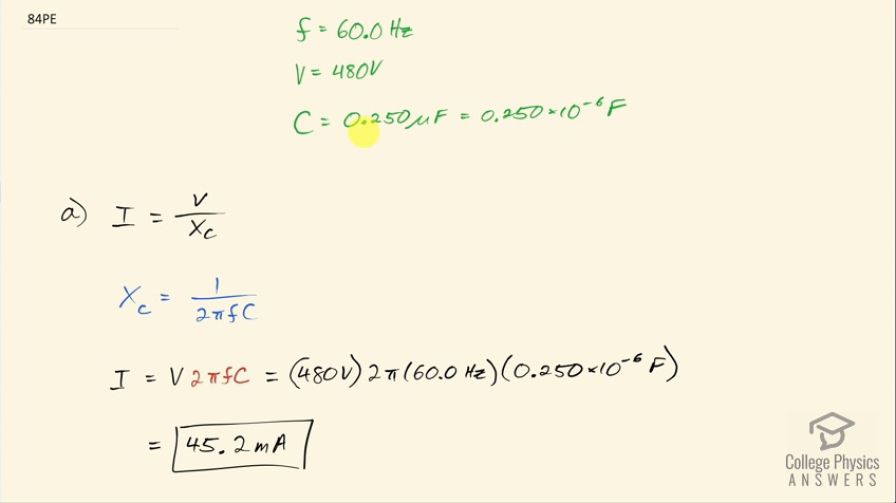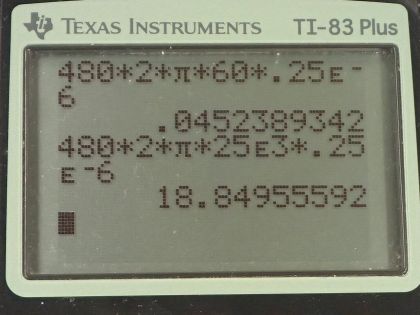Question
(a) What current flows when a 60.0 Hz, 480 V AC source is connected to a capacitor? (b) What would the
current be at 25.0 kHz?
Final Answer
Solution video
OpenStax College Physics, Chapter 23, Problem 84 (Problems & Exercises)

vote with a rating of
votes with an average rating of
.
Calculator Screenshots
Video Transcript
This is College Physics Answers with Shaun Dychko. A 480 volt AC power source with a frequency of 60.0 hertz is connected to a 0.250 microfarad capacitor which is 0.250 times 10 to the minus 6 farads and the question (a) is asking what current will flow? So the current in this formula that's analogous to Ohm's law which was, you know, V equals IR and then rearranged for I by writing it as V divided by R, the capacitive reactance is analogous to the resistance and so we take the voltage divided by that reactance to get the current. The reactance for a capacitor is 1 over 2π times the frequency times the capacitance. Now since we are going to divide by this fraction, I am going to instead multiply by its reciprocal since I think it's a bit messy to have a fraction within a fraction so the reciprocal of this is 2πfC and that's what I have written here and so our formula for the current then is voltage times 2π times frequency times capacitance, which is 480 volts times 2π times 60 hertz times 0.250 times 10 to the minus 6 farads, which is 45.2 milliamps. I am writing it as a formula this way also makes it clear that the current will increase as the frequency increases. So for part (b) we are told that the frequency is 25 kilohertz, what will the new current be? And so this new current is I prime because it's a different I than we had in part (a) and the frequency is frequency prime for the same reason and this new current will be the same voltage as before times 2π times the new frequency times the same capacitance. That's 480 volts times 2π times 25.0 times 10 to the 3 hertz times 0.250 times 10 to the minus 6 farads and that is 18.8 amps. So the change in frequency made a dramatic change in the current.
